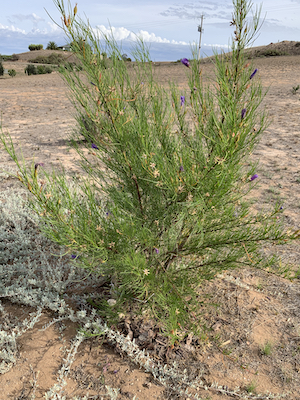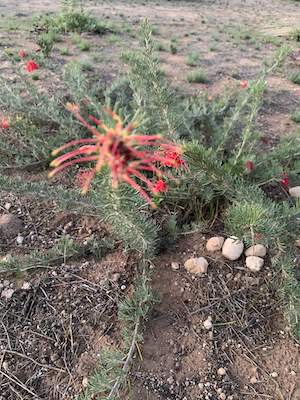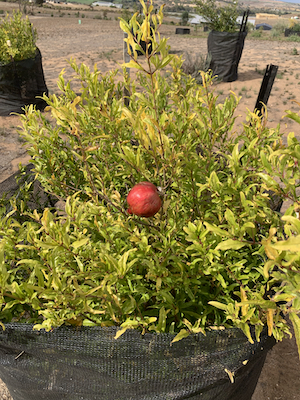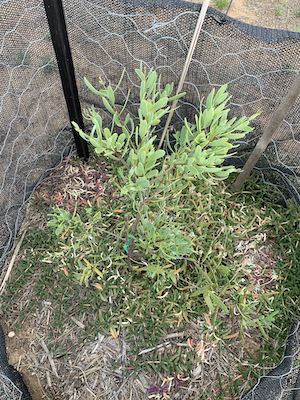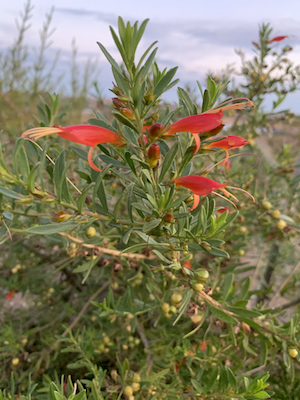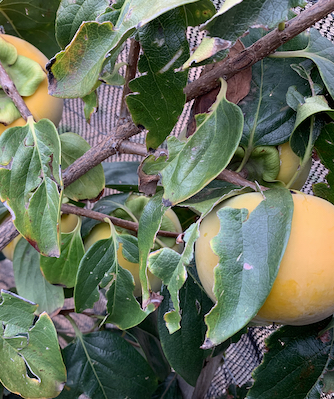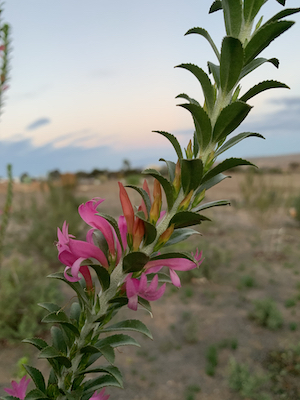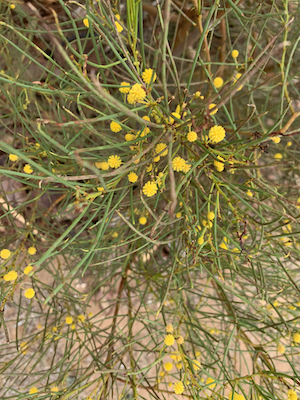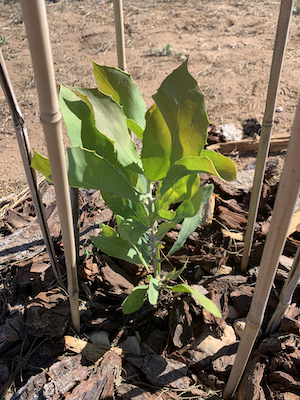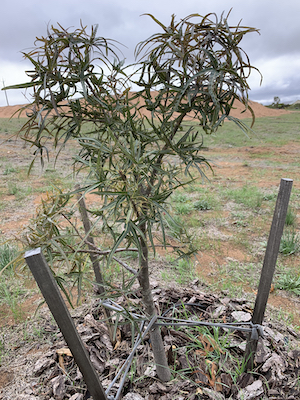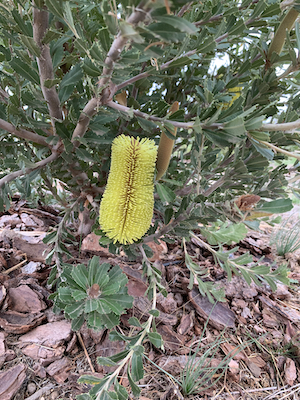Horticulture
The challenge…to revegetate 3.6 acres that had been used for cropping in the past and was home to a range of weeds: nut grass, onion weed, mustard weed, gazaneas, wild sage and other woody weeds.
The aim is to create a natural landscape following the flow of the land, with mainly native plants and some non-natives such as fruit trees. The site is open to predominantly westerly to south westerly winds. The soil is an alkaline sandy loam varying from 100mm to around 600mm on a limestone bedrock.
It can be easy to be overwhelmed, but by dividing the site into different sections and keeping to the vision of an open natural landscape the task is not so onerous.
The sections so far are:
Eremophila (a beautiful range of hardy native plants) plus some banksia, slat bush, eucalyptus, native hibiscus, scaevola, steroidal florulenta (blue rod), native lemongrass and French lavender;
Eastern fence line (a variety of acacias, senna, eucalyptus, hake, brachychiton, banksia and native hibiscus);
Mixed eastern (variety of hakea, grevillea, Eremophila, acacia, scaevola, steroidal florulenta (blue rod), native lemongrass and French lavender
Fruit trees (orange, persimmon, white sapote, walnut, mulberry, pomegranate plus natives such as juniper, kangaroo apple, melaleuca, callistemon, native hibiscus, native lemongrass, westringia etc);
Western fence line (a variety of eucalyptus, brachychiton, dodonaea, acacia and senna)
Santalum section (quandong and sandalwood trees with diversity of acacias, karkalla, native lemongrass, myoporum, westringia and salt bush)
Southern ring 1 (windbreak of allocasurina verticulata (sheoak) and agonis flexuosa (willow myrtle)
Southern ring 2 (mixture of hakea, templetonia, native lemongrass, pittosporum, karkalla and a central Queensland bottle tree)

